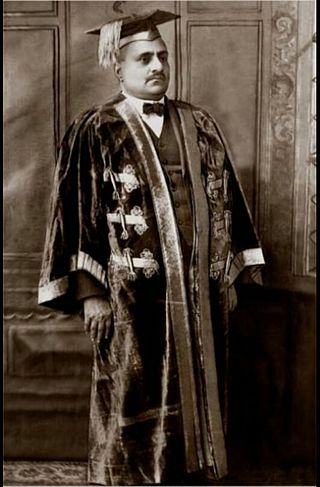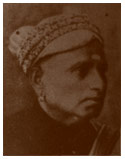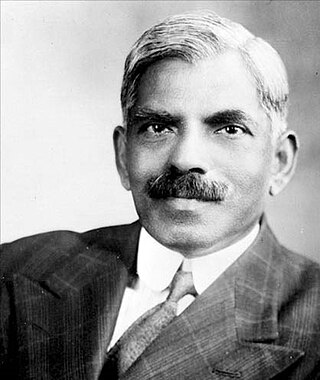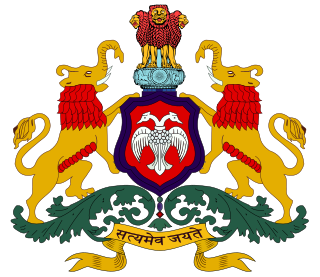Related Research Articles
A member of the Legislative Assembly (MLA) is a representative elected by the voters of an electoral district (constituency) to the legislature of State government in the Indian system of government. From each constituency, the people elect one representative who then becomes a member of the Legislative Assembly (MLA). Each state has between seven and nine MLAs for every Member of Parliament (MP) that it has in the Lok Sabha, the lower house of India's bicameral parliament. There are also members in three unicameral legislatures in Union Territories: the Delhi Legislative Assembly, Jammu and Kashmir Legislative Assembly and the Puducherry Legislative Assembly. Only a Member of the Legislative Assembly can work as a minister for more than 6 months. If a non-Member of the Legislative Assembly becomes a Chief Minister or a minister, he must become an MLA within 6 months to continue in the job. Only a Member of the Legislative Assembly can become the Speaker of the Legislature.
The Justice Party, officially the South Indian Liberal Federation, was a political party in the Madras Presidency of British India. It was established on 20 November 1916 in Victoria Public Hall in Madras by Dr C. Natesa Mudaliar and co-founded by T. M. Nair, P. Theagaraya Chetty and Alamelu Mangai Thayarammal as a result of a series of non-Brahmin conferences and meetings in the presidency. Communal division between Brahmins and non-Brahmins began in the presidency during the late-19th and early-20th century, mainly due to caste prejudices and disproportionate Brahminical representation in government jobs. The Justice Party's foundation marked the culmination of several efforts to establish an organisation to represent the non-Brahmins in Madras and is seen as the start of the Dravidian Movement.

Parliamentary life in Egypt has been a mark of Egyptian civilizations along its history. In modern history, parliamentary life started as early as 1824 while representative parliamentary life did not start until 1866. In 2016, Egypt celebrated the 150th anniversary of Parliamentary life in their country.
Raja Sri Ravu SvetachalapatiSir Ramakrishna Ranga RaoKCIE was an Indian politician and zamindar who served as the First Minister of Madras Presidency from 5 November 1932 to 4 April 1936 and 24 August 1936 to 1 April 1937.

Tamil Nadu Legislative Council was the upper house of the former bicameral legislature of the Indian state of Tamil Nadu. It began its existence as Madras Legislative Council, the first provincial legislature for Madras Presidency. It was initially created as an advisory body in 1861, by the British colonial government. It was established by the Indian Councils Act 1861, enacted in the British parliament in the aftermath of the Indian Rebellion of 1857. Its role and strength were later expanded by the second Council Act of 1892. Limited election was introduced in 1909. The Council became a unicameral legislative body in 1921 and eventually the upper chamber of a bicameral legislature in 1937. After India became independent in 1947, it continued to be the upper chamber of the legislature of Madras State, one of the successor states to the Madras Presidency. It was renamed as the Tamil Nadu Legislative Council when the state was renamed as Tamil Nadu in 1969. The Council was abolished by the M. G. Ramachandran administration on 1 November 1986. In 1989, 1996 and 2010, the DMK regime headed by M. Karunanidhi tried to revive the Council. The former AIADMK regime (2016-2021) expressed its intention not to revive the council and passed a resolution in the Tamil Nadu Legislative Assembly in this regard.

The Imperial Legislative Council (ILC) was the legislature of British India from 1861 to 1947. It was established under the Government of India Act 1858 by providing for the addition of six additional members to the Governor General Council for legislative purposes. Thus, the act separated the legislative and executive functions of the council and it was this body within the Governor General's Council which came to known as the Indian/Central Legislative Council. In 1861 it was renamed as Imperial Legislative Council and the strength was increased.

Sir Hari Singh Gour was a distinguished lawyer, jurist, educationist, social reformer, poet, and novelist. Gour was the First Vice-Chancellor of the University of Delhi and Nagpur University, founder and Vice-Chancellor of the University of Sagar, Deputy President of the Central Legislative Assembly of British India, an Indian Delegate to the Joint Parliamentary Committee, a Member of the Indian Central Committee associated with the Royal Commission on the Indian Constitution, and a Fellow of the Royal Society of Literature.
The Kingdom of Mysore was a kingdom in southern India traditionally believed to have been founded in 1399 in the region of the city of Mysore in Karnataka. For the most part, the Wodeyar dynasty ruled the southern Karnataka region until the kingdom united with the Dominion of India in 1947. During the kingdom's history, it went through various phases of administration, with increasing foreign influence from the eighteenth century.

S. Shungrasoobyer (1836–1904), also known as Sankara Subha Iyer or Sankara Stibbaiyar, was an Indian administrator who served as the Diwan of Travancore State from 1892 to 1898.

SirArcot Ramasamy Mudaliar was an Indian lawyer, diplomat, and statesman who was the first president of the United Nations Economic and Social Council and the 24th and last dewan of Mysore. He also served as a senior leader of the Justice Party and in various administrative and bureaucratic posts in pre- and Independent India. He was a prominent orator and was known for his inspiring speeches.
The Aundh Experiment was an early test of village-level self-government in British India which began in 1938 in Aundh State in present-day Maharashtra. Mohandas Gandhi, and Maurice Frydman helped to draft the November Declaration, which handed over rule of Aundh State from the Raja to the residents, and became law in the Swaraj Constitution of Aundh in 1939. The Aundh Experiment was an unusual idea in pre-independence India, where the rulers of princely states were loath to hand over their power.

Pudukkottai was a kingdom and later a princely state in British India, which existed from 1680 until 1948.

The Central Legislative Assembly was the lower house of the Imperial Legislative Council, the legislature of British India. It was created by the Government of India Act 1919, implementing the Montagu–Chelmsford Reforms. It was also sometimes called the Indian Legislative Assembly and the Imperial Legislative Assembly. The Council of State was the upper house of the legislature for India.

The Council of State was the upper house of the legislature for British India created by the Government of India Act 1919 from the old Imperial Legislative Council, implementing the Montagu–Chelmsford Reforms. The Central Legislative Assembly was the lower house.
The first legislative council election for the Madras Presidency after the establishment of a bicameral legislature by the Government of India Act of 1935 was held in February 1937. The Indian National Congress obtained a majority by winning 27 out of 46 seats in the Legislative Council for which the elections were held. This was the first electoral victory for the Congress in the presidency since elections were first conducted for the Council in 1920 and C. Rajagopalachari (Rajaji) became the Premier. The Justice Party which had ruled the presidency for most of the previous 17 years was voted out of power. Congress also won the Legislative assembly election held simultaneously.

The Karnataka Legislative Council is the upper house of the state legislature of Karnataka. Karnataka is one of six Indian states with a bicameral legislature; the Legislative Assembly is the lower house. The Council is a permanent body of 75 members, of whom 64 are elected in various ways in staggered elections and 11 are appointed by the Governor of Karnataka. Members hold their seats for six-year terms.

Raja Sri Brahdamba Dasa Raja Sir Martanda Bhairava Tondaiman was the ruler of the princely state of Pudukkottai from 15 April 1886 to 28 May 1928.
Diwan Bahadur Siram Venkataramadas Nayudu was an Indian administrator who served as Diwan of the Pudukkottai state from 1899 to 1909. He was the Chief Secretary and Magistrate of Madras Presidency
The Coorg Legislative Assembly was a legislative body which introduced laws for Coorg State from 1950 to 1956. It had its origins in the Coorg Legislative Council established on 26 January 1924 as a representative body of the Chief Commissioner's province of Coorg. When the Constitution of India came into force on 26 January 1950, the name of the body was officially changed to Coorg Legislative Assembly. The first and only general election to the assembly took place in 1952. It was eventually dissolved in 1956 when Coorg State was merged with the neighbouring Mysore State.

After the de facto merger on 1 November 1954 and before the legal integration with the Indian Union on 16 August 1962, general elections were held in 1955 and 1959. So. the first general elections to the Pondicherry Representative Assembly along with 16 municipal councils were held in 1955 from 18 to 23 July for 39 constituencies to constitute First Pondicherry Representative Assembly. The election were held on the basis of adult franchise under the State of Pondicherry Order, 1955 which prescribed the rules and regulations for the conduct of elections, more or less on the pattern adopted in the Indian Union. The elections were conducted under supervision of the Election commissioner Mr. Sukumar Sen and heavy polling was reported during the elections.
References
- Ayyar, K. R. Venkatarama (1938). A Manual of the Pudukkottai State. Vol. 1. Sri Brihadambal State Press.